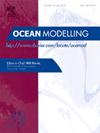The effect of sea-level rise on tides, extreme sea levels and waves in Port Phillip Bay in south-eastern Australia
IF 2.9
3区 地球科学
Q2 METEOROLOGY & ATMOSPHERIC SCIENCES
引用次数: 0
Abstract
Long-term sea level rise (SLR) related to climate change is expected to increase coastal flood risk from extreme storm tide events in many vulnerable regions of the world by the end of the century. However, coastal inundation from these extreme events arises through the complex interaction of SLR on astronomical tides, waves, and wave-current effects. These non-linear dynamic processes were investigated for the semi-enclosed Port Phillip Bay (PPB) in south-eastern Australia using a two-way coupled hydrodynamic-wave model. The model simulated water levels due to tides, weather and waves, and aspects of wave-flow interaction over a baseline period (1980–2014) and three 20-year periods (1980–1999) using projected SLR scenarios of 0.2 m, 0.8 m, and 1.4 m (latter subsequently extended to 35 years to match baseline). The baseline simulation showed that, because of the predominant wind direction and distance from PPB Heads, the western shores of PPB were vulnerable to high Annual Exceedance Probability (AEP) water levels, but not wave heights, whereas the eastern shores experienced high AEP values for both water levels and waves. SLR simulations indicated in most regions extreme water levels within PPB would increase a further ∼10 % beyond the value of the applied SLR. Storm wave energy also increased with SLR e.g., under the 1.4 m SLR scenario, the 1 % AEP significant wave height increased by 5–10 % in most areas, and by 15–20 % in some locations near PPB Heads. These results provide important practical information for coastal management planning and policy over climate change timescales.
海平面上升对澳大利亚东南部菲利普湾的潮汐、极端海平面和海浪的影响
到本世纪末,与气候变化相关的长期海平面上升(SLR)预计将增加世界上许多脆弱地区极端风暴潮事件造成的沿海洪水风险。然而,这些极端事件引起的沿海淹没是由单反与天文潮汐、波浪和波流效应的复杂相互作用引起的。采用双向耦合水动力波模型研究了澳大利亚东南部半封闭菲利普湾港口(PPB)的非线性动力过程。该模式模拟了基线期(1980-2014年)和三个20年期(1980-1999年)的水位,使用预估的SLR情景为0.2 m、0.8 m和1.4 m(后者随后延长至35年以匹配基线)。基线模拟结果表明,由于主要风向和距离PPB头的距离,PPB西海岸容易受到高年超越概率(AEP)水位的影响,而不是浪高,而东岸的水位和浪高都有高年超越概率(AEP)值。SLR模拟表明,在大多数地区,PPB内的极端水位将比应用的SLR值进一步增加~ 10%。风暴波的能量也随着高度的增加而增加,例如,在1.4米高度的情况下,1% AEP显著波高在大多数地区增加了5 - 10%,在PPB头附近的一些地方增加了15 - 20%。这些结果为气候变化时间尺度下的沿海管理规划和政策提供了重要的实用信息。
本文章由计算机程序翻译,如有差异,请以英文原文为准。
求助全文
约1分钟内获得全文
求助全文
来源期刊

Ocean Modelling
地学-海洋学
CiteScore
5.50
自引率
9.40%
发文量
86
审稿时长
19.6 weeks
期刊介绍:
The main objective of Ocean Modelling is to provide rapid communication between those interested in ocean modelling, whether through direct observation, or through analytical, numerical or laboratory models, and including interactions between physical and biogeochemical or biological phenomena. Because of the intimate links between ocean and atmosphere, involvement of scientists interested in influences of either medium on the other is welcome. The journal has a wide scope and includes ocean-atmosphere interaction in various forms as well as pure ocean results. In addition to primary peer-reviewed papers, the journal provides review papers, preliminary communications, and discussions.
 求助内容:
求助内容: 应助结果提醒方式:
应助结果提醒方式:


